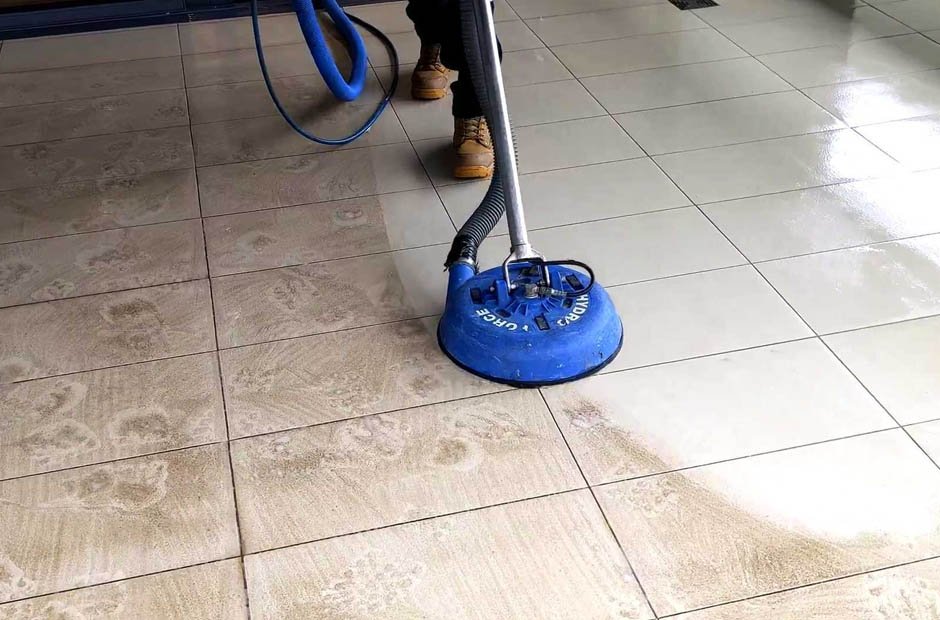Tiles enhance the aesthetic appeal of our homes and offices. However, maintaining their shine and cleanliness can be quite a task, especially with the grout lines accumulating grime and dust over time. One of the traditional methods of restoring the shine involves manual scrubbing with a variety of cleaning agents. But modern advancements have led to the introduction of steam cleaning.
The importance of tile and grout cleaning cannot be overstated. Aside from preserving the appearance of your home or workplace, regular cleaning prevents the build-up of mold and bacteria that could negatively affect your health according to an expert management company, Foothills Properties in Vail. But, which cleaning method should you opt for, traditional or steam cleaning? How do they benefit you? What expenses do they involve? Which method is the most efficient and safer to use? In the following sections, we aim to compare these cleaning practices on various aspects like cost, efficiency, and safety to help you make a well-informed choice.
Table of Contents
Understanding Traditional Tile and Grout Cleaning Methods
Traditional tile and grout cleaning methods often involve labor-intensive procedures that most homeowners are familiar with. These routines might typically involve manual scrubbing using a brush along with a reliable tile and grout cleaner. These cleaners are special mixtures designed to break down the grime and dirt that accumulate on tile surfaces and grout lines. The process requires determination and elbow grease, as the embedded dirt can be stubborn and challenging to remove.
The tools used in traditional cleaning methods are usually simple and easy to find. They may include a scrubbing brush or an old toothbrush for tight spots, a bucket, warm water, and your chosen tile and grout cleaner. The method works by applying the cleaner on the tile surface and grout, letting it sit for a while to break down the dirt, and scrubbing it manually afterwards. It’s worth noting that the results usually depend on the quality of the cleaner used and the amount of effort put into the scrubbing process.
Steam Cleaning
Steam cleaning is a modern cleaning method that presents a combination of convenience and hygiene. Unlike traditional methods that may require strenuous manual scrubbing, steam cleaning employs the power of hot water vapor to clean and sanitize surfaces. This method is highly effective in breaking down stubborn grime, eliminating bacteria, and treating hard-to-reach areas, which makes it an ideal cleaning solution for tile and grout.
Steam cleaning involves the use of specially designed machines known as steam cleaners. There are various types, including handheld steam cleaners for small and tight areas, steam mops for floor surfaces, and cylinder or canister steam cleaners for large cleaning tasks. These devices operate by heating water to a high temperature to produce steam, which is then released through a nozzle, brush, or other attachments. The steam penetrates the surface pores, loosening the dirt, which can then be easily wiped away. The high temperature of the steam also kills many common types of bacteria, ensuring a deeper level of sanitation.
Traditional Cleaning vs. Steam Cleaning
In the short term, both methods can provide impressive results; however, over time steam cleaning might show superiority owing to its sanitizing ability. It penetrates deep into the tile and grout, eliminating stubborn grime and killing bacteria, which traditional methods may not reach. Steam cleaning is generally gentle and safe for various types of tiles and grout, unlike some harsh chemical cleaners that may cause discoloration or damage. That said, it is recommended to follow the guidance of a professional tile and grout cleaner service to choose the best cleaning method for your specific situation.
Cost
In terms of cost, traditional methods require less initial investment as they use basic tools and cleaning solutions, while steam cleaners can be quite expensive upfront. Considering ongoing expenses, traditional methods may require regular purchase of cleaning solutions, while steam cleaning uses only water, making it cost-effective in the long run. Traditional cleaning methods are pretty straightforward but demand considerable manual effort and time. In contrast, steam cleaning, despite being slightly more complex to set up, eases the cleaning process significantly, thus saving time and effort.
Safety and Health Issues
Traditional cleaning solutions may sometimes affect indoor air quality due to the chemicals used, and some may pose skin irritation or allergy risks. Steam cleaning, on the other hand, only uses water, and hence, doesn’t pose similar hazards. However, the high temperature of the steam calls for careful handling to avoid scalds or burns.
Weighing the Pros and Cons
The strength of traditional tile and grout cleaning methods lies in their simplicity and upfront affordability. They are easy to carry out and do not require any specialized equipment, making them accessible to everyone. On the other hand, steam cleaning provides deep sanitation and efficiently breaks down stubborn grime in hard-to-reach areas. While it needs an initial investment, over time it becomes cost-effective and is a time-saver too. Along with cleaning, it also offers the added advantages of disinfection and is generally safe for various types of tiles and grout.
Traditional cleaning methods can be labor-intensive and time-consuming. They also often rely on chemical cleaning solutions that may not be the best for the environment or indoor air quality.
Steam cleaning, too, is not without cons. The initial cost of purchasing a steam cleaner is quite high. Also, improper use could potentially cause damage to surfaces, and the high heat can be a safety hazard if not handled carefully.
While traditional methods have the advantage of simplicity and upfront affordability, steam cleaning offers deep sanitization and long-term cost-effectiveness. Ultimately, the choice between the two methods should hinge on your personal needs, resources, and the type of tile and grout that your home or office has, ensuring that whatever method you decide upon will effectively maintain your spaces clean, aesthetically pleasing, and safe.










